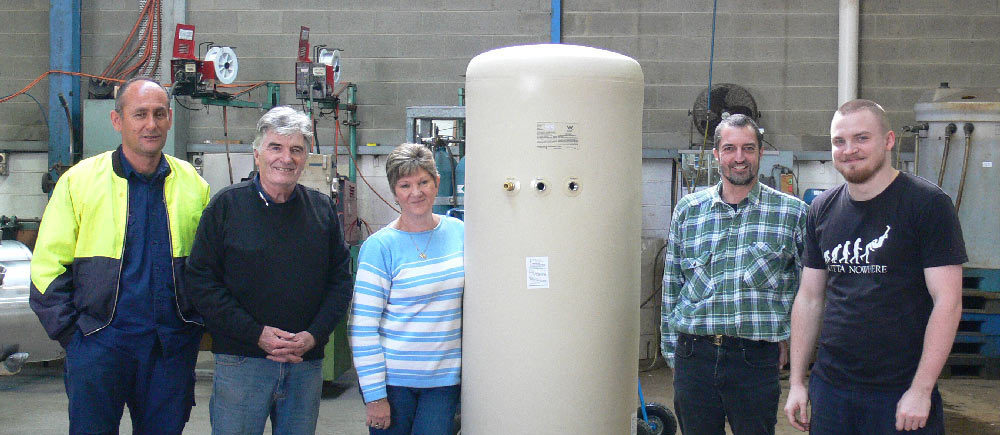Suggestions for how we can tackle the climate crisis while centering justice for communities
EnergyAustralia needs to close their polluting power station in a way that supports the community to move on to a brighter and fairer future.
This means providing retraining and re-employment support for workers. It means coordinating with government to attract new, cleaner industries to the region. And it means cleaning up their mess by properly rehabilitating their giant coal mine.
The need for a just transition in the Latrobe Valley
The Latrobe Valley is home to three large power stations. A fourth one, Hazelwood, closed in 2017. The regional economy is already changing and will continue to be affected by Victoria’s shift to clean energy as all coal power is eventually phased out to protect our climate.
Energy Australia, the owners of Yallourn, have already announced a closure deal with the Victorian government that will see the power station close in 2028 at the latest. But given the rapid pace of transition in the energy market and the high maintenance costs for such an old power station, Yallourn may still stop operating earlier.
Yallourn is the dirtiest coal power station in Australia, it needs to close well before 2030. But it is also an important part of the Latrobe Valley’s history and a local employer of around 200 direct staff and 250 contractors whose wages filter out through the broader community. We know the deal contains $10 million in support for workers, but a just transition needs much more than a modest package for workers.
A truly fair transition means putting power back in the hands of the people who live and work in the Latrobe Valley to design and determine their own future.
That’s why Government and the wider community needs to provide long-term support for the Latrobe Valley to attract and grow new businesses, employers, skills and training providers in the industries of the future. Without a planned transition the community will remain in the dark, which makes it harder to prepare for economic change.
When it comes to the other two power stations, AGL and Alina are saying they want to operate Loy Yang A and B well into the 2040s. But experience suggests big energy corporations cannot be trusted when it comes to closure dates. For example, ENGIE, the French company that owned Hazelwood, gave its workers just 5 months notice of Hazelwood’s closure. This came as a surprise to many employees who were under the impression that it would remain open for another 5 to 10 years!
What’s the Latrobe already doing to transition?
On the same day the closure of Hazelwood power station was announced in late 2016, the Victorian government introduced a $266 million transition package and initiated the Latrobe Valley Authority (LVA) to coordinate transition and economic development in the area. The federal government also provided a $40 million support package.
To our knowledge, this is the largest ever transition package provided by a government in response to a power station closure. (Learn more about the transition package in this article written by one of the workers at Hazelwood.)
In the first two years since Hazelwood’s closure, unemployment went down and a number of new businesses have moved to the area.
There are other exciting examples of what would be possible with greater scale and investment in clean energy solutions. Gippsland Solar has employed ex-Hazelwood workers, and the Earthworker cooperative has set up local solar hot water manufacturing.
A 300 megawatt wind farm has also been proposed near the old Hazelwood site, and is slated to begin construction in 2022. More than $3 million a year from the wind farm would go to the local community, including landowners, councils, and the project’s neighbours.

The Earthworker factory in Morwell, where locals are employed to manufacture solar hot water systems. Credit: Earthworker.
Despite its success, the Latrobe Valley Authority’s future is still uncertain, with their funding due to run out in the next year. But ongoing support to deliver long term planning and holistic transformation is needed.
Given the importance of local community leadership and the inclusive, participatory process, the Authority should be funded to continue its important work.
The rehabilitation of the mines is also another important focus. Done poorly, the old mine pits could continue to be a health and fire hazard to the local community. Done well, rehabilitation could provide jobs and new community assets.
The Hazelwood mine fire in 2014 and the resulting inquiries triggered an update of Victoria’s mine rehabilitation laws and policies. This included increasing the bonds paid by the mine owners. The new amounts are much closer to the full cost of rehabilitation, which reduces the risk of the owners avoiding their responsibility to properly rehabilitate their mines.
A regional rehabilitation strategy is being developed, and there is still an important role for the community and environment groups to play in ensuring these plans meet community expectations.
What we need now
Our campaign is calling for:
- Workers to get the assistance they need. Government agencies and EnergyAustralia must ensure that all workers, contractors and their families gain access to counselling, training, certification and new work opportunities in advance of closures.
- The Latrobe Valley Authority to be a permanent statutory authority allowing it to support transition in the Latrobe Valley over the long-term as the remaining three power stations are phased out and new industries, employers and opportunities are embedded in the region.
- A clean and safe environment left behind by successful rehabilitation of the Yallourn mine. The Yallourn mine is a gigantic coal pit. If not properly rehabilitated, it could be at risk of collapse or catching fire. The people of the Latrobe Valley have put up with pollution and poor health outcomes from this power station for many years. When the power station is finally closed, the toxic pit should be turned into a safe and clean space that provides a positive asset for the community.